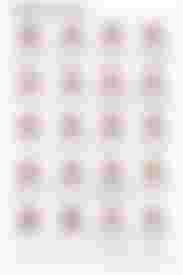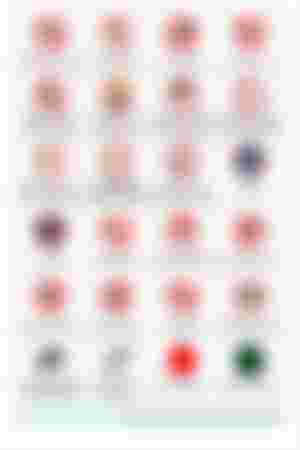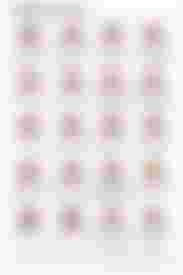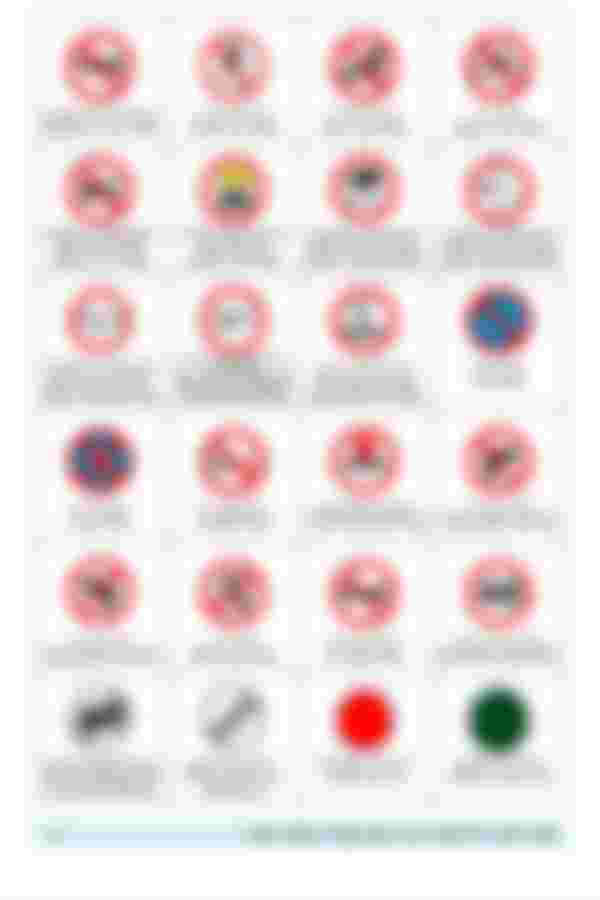Want a driving license?
Learn your own driving test standard 75 questions and answers on the driving license and encourage others to learn.
=====================================
01. Q: What is a motor vehicle?
A: Under the Motor Vehicle Act, motor vehicle means a motor vehicle whose propulsion is supplied from an external or internal source.
02. Q: What are the tasks to be done before driving?
Answer: a. Carry updated vehicle valid documents (Registration Certificate, Fitness Certificate, Textoken, Driving License, Insurance Certificate, Route Permit etc.) with the vehicle.
B. Check if there is fuel in the car, if not, take according to the quantity.
C. Check if there is water in the radiator and battery, if not, take the amount.
D. Check battery connection.
E. Check the label and concentration of lube / engine oil, if less, take as quantity.
F. Check the brake fluid, brake oil of the master cylinder, if any.
G. Checking whether the engine, lighting system, batteries, steering, etc. of the vehicle are working properly, whether the nut-bolt is tight, i.e. whether the motor vehicle is defect free in general.
H. Examine the effectiveness of brakes and clutches.
I. Keep fire extinguishers and first aid boxes in the car.
J. Check the condition of the outside and inside lights of the vehicle, wheels (tire condition / air / nut / alignment / rotation / spare wheel).
03. Q: What is meant by motor vehicle maintenance?
Ans: All the repairs that are done in the car every day to get long service from a defect free car are called motor vehicle maintenance.
04. Q: What are the daily maintenance of a motor vehicle?
Answer: From B to J in the answer to question no.2.
05. Q: What is meant by servicing?
Ans: Servicing is the work that is done from time to time to prolong the performance of the engine and various parts of the motor vehicle.
07. Q: What is done in car servicing?
Answer: a. Disposal of old lube oil (mobil) of engine and new lube oil. Flushing with flushing oil before giving new lube oil.
B. Drain the engine and radiator water and clean with detergent and flushing, then fill with clean water.
C. In the case of heavy motor vehicles, new grease is provided with grease guns at various greasing points.
D. Adequate ventilation of each wheel including the spare wheel of the vehicle.
E. Replacing lube oil (mobile) filters, fuel filters and air cleaners.
07. Q: What are the documents to keep with the car while driving?
Answer: a. Driving license, b. Registration Certificate (Blue-Book), c. Textoken, d. Insurance Certificate, e. Fitness Certificate (not applicable to motorcycles) and f. Route permit (not applicable to private passenger vehicles with a maximum of 6 seats except for motorcycles and drivers).
07. Q: Who can check the vehicle documents on the road / Who are the authorized persons to show the vehicle documents?
Answer: Police officers who are not below sergeant or sub-inspector, BRTA officers including motor vehicle inspectors and mobile court officers.
09. Q: What is the law on wearing a helmet on a motorcycle and carrying a rider?
Answer: One rider can be carried on a motorcycle without a driver and both of them have to wear helmets (Section 100 of the Motor Vehicles Ordinance, 1983).
10. Q: What are the main causes of road accidents?
Answer: a. Excessive self-confidence, b. Excessive driving, c. Unauthorized overtaking and d. Carrying extra passengers and cargo.
11. Q: What should a driver do in a car accident?
A: To ensure the treatment of the injured person, transfer him to the nearest hospital if necessary and report the accident to the nearest police station within 24 hours.
12. Q: What is the maximum speed limit for a car according to the law?
Ans: Maximum 70 miles per hour for light motor vehicles and motorcycles, maximum 35 miles per hour for medium or heavy passenger motor vehicles and maximum 30 miles per hour for medium or heavy freight motor vehicles.
13. Q: What is a motor driving license?
Answer: A motor driving license is a valid document issued by the licensing authority for driving a motor vehicle in a public place.
14. Q: What is an amateur driving license?
Answer: A license with which a driver can drive a motorcycle, light motor vehicle and other motor vehicles (excluding transport) without being a salaried employee is called amateur driving license.
15. Q: What is the minimum age for obtaining a driving license?
Answer: 20 years for professional driver and 18 years for amateur driver.
16. Q: Which people will be considered ineligible to get a driving license?
A: People with epilepsy, insanity or madness, night blindness, leprosy, heart disease, excessive alcoholism, deafness and difficulty in controlling arm or leg movement.
16. Q: What is a light motor vehicle?
Answer: A motor vehicle whose registered load weighs no more than 6,000 pounds or 2,626 kg is called a light motor vehicle.
16. Q: What is a medium or medium motor vehicle?
A: A motor vehicle with a registered weight of more than 6,000 pounds or 2,626 kg but not more than 14,500 pounds or 8,590 kg is called a medium motor vehicle.
19. Q: What is a heavy motor vehicle?
A: A motor vehicle with a registered load of more than 14,500 pounds or 6,590 kg is called a heavy motor vehicle.
20. Q: What is a private service motor vehicle?
Ans: A motor vehicle which is suitable for carrying more than eight passengers without a driver is used by the owner for his business related work and for carrying passengers without rent, it is called private service motor vehicle.
21. Q: What are the main types of traffic signs or road signs?
A: There are three main types of traffic signs. A. Mandatory, which is mainly circular,
B. Cautionary, which is mainly triangular and c. Informative, which is mainly rectangular.
22. Q: What direction does the red circular sign indicate?
Ans: Prohibits or cannot be done or shows mandatory instructions.
23. Q: What direction does the blue circular sign indicate?
A: Displays or must follow instructions.
24. Q: What does the red triangle sign indicate?
A: Displays caution instructions.
25. Question: What kind of sign is a blue rectangle?
Answer: General informational sign.
26. Q: What kind of sign is a green rectangle?
A: Guide information sign, which is used on national highways.
26. Q: What kind of sign is a white rectangle with a black border?
A: It is also a directional information sign, which is used on roads other than highways.
26. Q: How many types and what are the traffic signals?
Answer: 3 (three) types. Such as- a. Arm signal, b. Light signal and c. Sound signal.
29. Q: What are the cycles or sequences of traffic light signals?
A: Red-green-yellow and red again.
30. Q: What instructions do the red, green and yellow lights show?
A: If the red light is on, the car has to wait behind the ‘stop line’, if the green light is on, the car can proceed and if the yellow light is on, the car has to be prepared to stop.
31. Q: What does safe distance mean?
Ans: Safe distance is the amount of distance required to drive to stop the car in front to avoid collision with the car in front.
32. Q: What is the safe distance if you drive at a speed of 50 km on a paved and good road?
Answer: 25 meters.
33. Q: What is the safe distance if you drive at a speed of 50 miles on a paved and good road?
Answer: 50 yards or 150 feet.
34. Question: 50 km in red circle. What does it mean if written?
Answer: The maximum speed limit of the car is 50 km per hour. That means you can't drive at a speed of more than 50 kilometers per hour.
35. Question: 50 km per hour in the blue circle. What does it mean if written?
Answer: The minimum speed limit is 50 km per hour. In other words, it is not possible to drive at a speed of less than 50 kilometers per hour.
36. Q: What does it mean if the horn is drawn in a red circle?
Answer: It is forbidden to play the horn.
36. Q: What does it mean to have a picture of a big bus inside the red circle?
A: No entry for big buses.
36. Q: What does it mean to draw a picture of a moving man in a red circle?
Answer: Pedestrian crossing is prohibited.
39. Q: What does it mean to have a picture of a moving man in a red triangle?
A: Pedestrian crossing in front, so be careful.
40. Q: What does it mean to have a red and a black car inside a red circle?
Answer: Overtaking is prohibited.
41. Q: What does it mean if ‘f’ is written in a rectangle?
A: The designated place for parking.
42. Defense: In which places it is forbidden to blow car horn?
Answer: It is forbidden to blow the horn of a car in a quiet area. Areas up to 100 meters around hospitals, educational institutions, offices-courts or similar institutions are marked as silent areas.
43. Q: In which places is it forbidden to overtake?
Answer: a. In places where there is a sign prohibiting wartecking, b. At the junction, c. Bridge / culvert and before and after certain distance, d. Narrow streets, e. In the area of hospitals and educational institutions.
44. Q: In which places is it forbidden to park a car?
Answer: a. Where there is a parking prohibition board, b. At the junction, c. On the bridge / culvert, d. On the narrow street,
E. In the area of hospitals and educational institutions, f. On mountain slopes and sloping roads, sidewalks, pedestrian crossings and its surroundings, g. Bus stop and its surroundings and h. Railcrossing and its surroundings.
45. Q: Which side of the road will the car travel on?
Answer: The car will move on the left side of the road. Roads with multiple lanes will have slower lanes in the left lane, and faster lanes in the right lane.
46. Q: When can you overtake with the left?
A: The driver of the car in front will overtake with the left hand only when the driver of the car in front is going to go in the middle of the road with the proper signal to turn right.
46. Q: What are the things to keep in mind while following the car in front while moving?
Answer: (a) Speed and movement of the vehicle in front, (b) whether the vehicle in front is signaling to stop, (c) whether the vehicle in front is signaling to turn right / left, (d) whether a safe distance is maintained from the vehicle in front .
46. Q: What should a driver do if there is a warning "School / Children" sign on the side of the road?

Ans: (a) It is necessary to reduce the speed of the vehicle and proceed with caution by seeing and hearing well on both sides of the road.
(B) If there is a child waiting to cross the road, he should be given priority.
49. Q: How do you signal with the driver's hand to reduce the speed of the car?
A: The driver will continue to move up and down slowly through the window of his right hand car.
50. Question: How many types and what are the level crossings or rail crossings?
Answer: Level crossing or rail crossing 2 types. A. Protected rail crossings or guard controlled rail crossings, b. Unsafe railcrossing or unguarded railcrossing.
51. Q: What is the duty of the driver in the reserved level crossing?
A: You have to slow down and drive carefully. If the road is closed then the car has to be stopped, and if it is open then you have to cross it by looking at the left left.
52. Q: What is the driver's duty at unprotected level crossings?
Answer: The speed of the vehicle should be reduced to the front with caution, if necessary, stop near the level crossing. Then you have to cross if you feel safe looking at the left.
53. Q: Why should the driver be alert near the airport?
Ans: (a) The driver may be suddenly disturbed by the loud noise of the aircraft, (b) general hearing may be disturbed, (c) VVIP / VIP movement is more at the airport so one has to be careful about this.
54. Q: Why should motorcyclists and riders wear helmets?
Answer: The human head is one of the most sensitive and important organs in the body. People can die if they are slightly injured here.
So helmets should be used to protect human heads in accidents.
55. Q: How often do you need to look at the looking glass to monitor the condition of the rear of the car?
Answer: 6 to 7 times per minute.
57. Q: What precautions are to be taken on hilly roads?
A: Carefully keep a safe distance from the car in front and gear 1 or first gear should be carefully climbed slowly. You have to go to the top of the hill and climb more slowly, because the visibility at the top is very limited. As the speed of the vehicle gradually increases while getting down, you have to get down keeping additional distance from the car in front. No overtaking can be done during the ups and downs.
57. Q: What are the precautions to take when driving in the rain?
A: The brakes work less as the road is slippery during rains. For this reason, as an extra precaution, you have to drive at a slower speed (half the normal speed), so that the brakes can be applied to stop the car very easily. This means that the car has to be driven slowly in the rain so that it can be stopped or controlled very easily by applying the brakes.
57. Q: What should a driver do before climbing a bridge?
A: Vehicles coming from the other side of the bridge, especially high bridges, are not easily visible, so you have to slow down carefully before climbing the bridge. Moreover, since the width of the bridge is much less than the road, the bridge can never be overtaken.
59. Q: What precautions should be taken when entering the main road from the sidewalk?
Ans: Before entering the main road from the side road or small road, it is necessary to reduce the speed of the vehicle, stop it if necessary, and allow the vehicle on the main road to proceed without any hindrance. Observe the movement of vehicles on the main road and enter the main road as carefully as possible.
60. Q: What types of roadmarks are mainly on the road?
Answer: There are mainly 03 types of roadmaking on the road.
A. Bhangaline, which can be crossed.
B. Single integral line, which is prohibited to be crossed, but special needs can be crossed.
C. Dual integrity, which is prohibited and legally punishable. This type of line refers to the division of a traffic island or road.
61. Q: What is the duty of the driver in zebra crossing?
A: At zebra crossings, pedestrians must be allowed to go first and vehicles must stop before pedestrians cross the zebra crossing. Vehicles cannot be stopped or parked at zebra crossings.
72. Q: Which cars should be given a chance to overtake?
Ans: Vehicles with high speed, ambulance, fire service etc., emergency services, VVIP vehicles etc.
63. Q: What are the rules for using head light flashing or upper dipper?
A: Low-beam or dipper or soft beam is commonly used in the city. ‘High or Upper or Sharp Beams’ are used on highways and out-of-town roads for night viewing when there are no cars nearby. However, if the vehicle coming from the opposite direction moves within 150 meters, the low beam will have to be extinguished by turning off the high beam. In other words, a car coming from the opposite direction has to ignite low-beam while passing / crossing.
64. Q: What to do if the car brakes fail?
Ans: If the brakes of the car fail, first you have to remove the foot from the accelerator. In the case of manual gear vehicles, the gears have to be changed first to the second gear and then to the first gear. This will reduce the speed of the car a lot. If it is not possible to stop the vehicle in this manner, it is necessary to stop the vehicle by blocking the road island, divider, sidewalk or anything else conveniently. Care should be taken to ensure that there is no loss or damage to property during stopping.
65. Q: What to do if the wheel of the car is broken?
Answer: When the wheel of the car bursts, the car becomes uncontrollable. During this time the driver of the vehicle must hold the steering wheel firmly and move the foot away from the accelerator to gradually reduce the speed and brake slowly to stop the vehicle. Do not brake immediately if the wheel of the vehicle breaks while moving. The car became uncontrollable.
. Q: What is a hazard?
Ans: There are two pairs of indicator lights in the front and rear corners of each vehicle. When all four of these indicator lights come on and off, they are called hazard lights. These lights are used in dangerous moments, when the car breaks down and in inclement weather.
. Q: What instruments are on the dashboard of the car?
Answer: a. Speedometer - Shows how fast the car is moving.
B. Odometer - Shows how many kilometers or miles the car has been running since its inception.
C. Tripmeter - Shows how many kilometers / miles a car travels on one trip.
D. Temperature gauge - shows the temperature of the engine.
E. Fuel Gauge- Shows the amount of oil in the car.
. Q: What are the lights in the car?
Answer: a. Headlights, b. Parklight, c. Breaklight, d. Riverslight e. Indicatorlight, f. Foglight and g. Numberplate lights.
69. Question: In which gear do you have to drive the car on the hill and slope / peak road?
A: In first gear. This is because the engine needs more power to drive in first gear.
60. Q: What does it mean if the red letter "B" is written in large letters on the front and back of the car?
A: It is a trainee driver's car. Be careful of this car.
61. Q: Is it legal to drive with a trainee driving license?
Answer: In the presence of the instructor, it is legal to drive a vehicle with dual system (double steering and brakes) in the designated area by displaying "B" on the front and back.
72. Q: What is meant by a four-wheel drive car?
A: The engine usually supplies power to the rear two wheels of the car. A car with four wheels (front and rear) for special needs is called a four-wheel drive vehicle.
63. Q: When to apply a four-wheel drive?
A: Only the rear two-wheeler drive is provided when driving on good roads. But driving on slippery, muddy roads requires four-wheel drive.
64. Q: What is a toolbox?
A: Toolbox is an electronics box that is kept with the car. Equipment and supplies required for emergency repair of motor vehicles are kept in the toolbox.
65. Q: What are the penalties for driving without a driving license or being allowed to drive?
Answer: Maximum imprisonment of 4 months or fine up to Rs.500 or both (Section 138 of Motor Vehicles Ordinance, 1983). In this case both the owner and the driver can be punished.
. Q: What is the penalty for adding and using prohibited horns or loud-emitting devices in cars?
Answer: Fine up to Rs. 100 (Section 139 of the Motor Vehicle Ordinance, 1983).
. Q: What is the penalty for driving or permitting to drive without a registration certificate, fitness certificate and route permit?
A: A maximum of 3 months imprisonment or a fine of up to Rs 2,000 or both for the first offense. A maximum of 6 months imprisonment or a fine of up to Rs. In this case both the owner and the driver can be punished.
. Q: What is the penalty for driving under the influence of alcohol?
Answer: Maximum 3 months imprisonment or fine up to Rs.1000 or both. Subsequent imprisonment for a maximum of 2 years or a fine of up to Rs.1000 or both for each time and revocation of driving license for a specified period (Section 144 of the Motor Vehicles Ordinance, 1983).
69. Q: What is the penalty for driving faster or faster than the prescribed speed?
A: A maximum of 30 days imprisonment or a fine of up to Rs 300 or both for the first offense. Subsequent offense carries a maximum imprisonment of 3 months or a fine of up to Rs.500 or both and suspension of driving license for one month (Section 142 of the Motor Vehicles Ordinance, 1983).
60. Q: What is the punishment for reckless and dangerous driving?
Answer: Imprisonment for a maximum of 6 months or a fine of up to Rs.500 and suspension of validity of driving license for any period (Section 143 of the Motor Vehicles Ordinance, 1983).
61. Q: What is the penalty for driving a car that emits harmful fumes?
Answer: A fine of Rs. 200 (Section 150 of the Motor Vehicle Ordinance, 1983).
72. Question: What is the punishment for driving or allowing to carry more weight than the prescribed weight limit?
Answer: A fine of up to Rs. 1,000 for the first time and imprisonment for up to 6 months or a fine of up to Rs. 2,000 or both (Section-154). In this case both the owner and the driver can be punished.
63. Q: What is the penalty for driving without insurance?
Answer: A fine of up to Rs. 2,000 (Section-155 of the Motor Vehicles Ordinance, 1983).
64. Question: What is the punishment for repairing a motor vehicle on a public road or in a public place or for obstructing the sale of any parts or products on the road?
Answer: Maximum fine of 500 rupees. Similar motor vehicles or spare parts or accessories may be confiscated (Article 156).
65. Q: What is the function of fuel gauge?
Answer: The amount of fuel in the fuel tank can be known through the fuel gauge.


